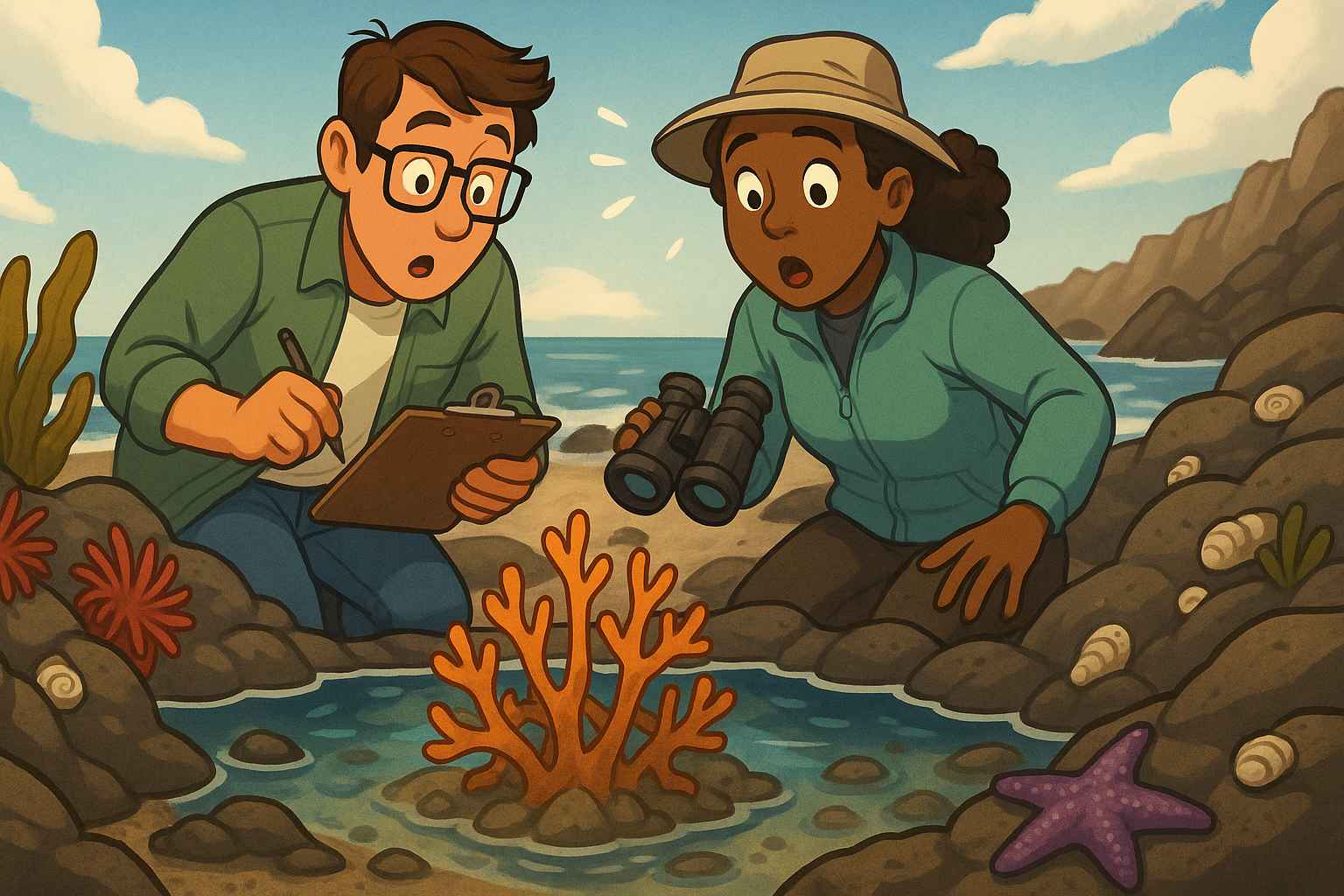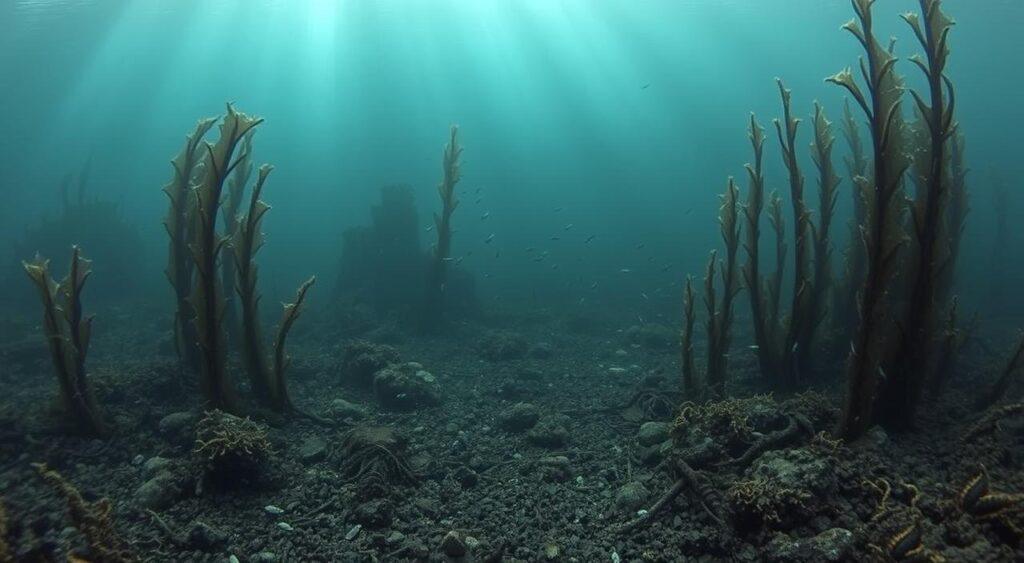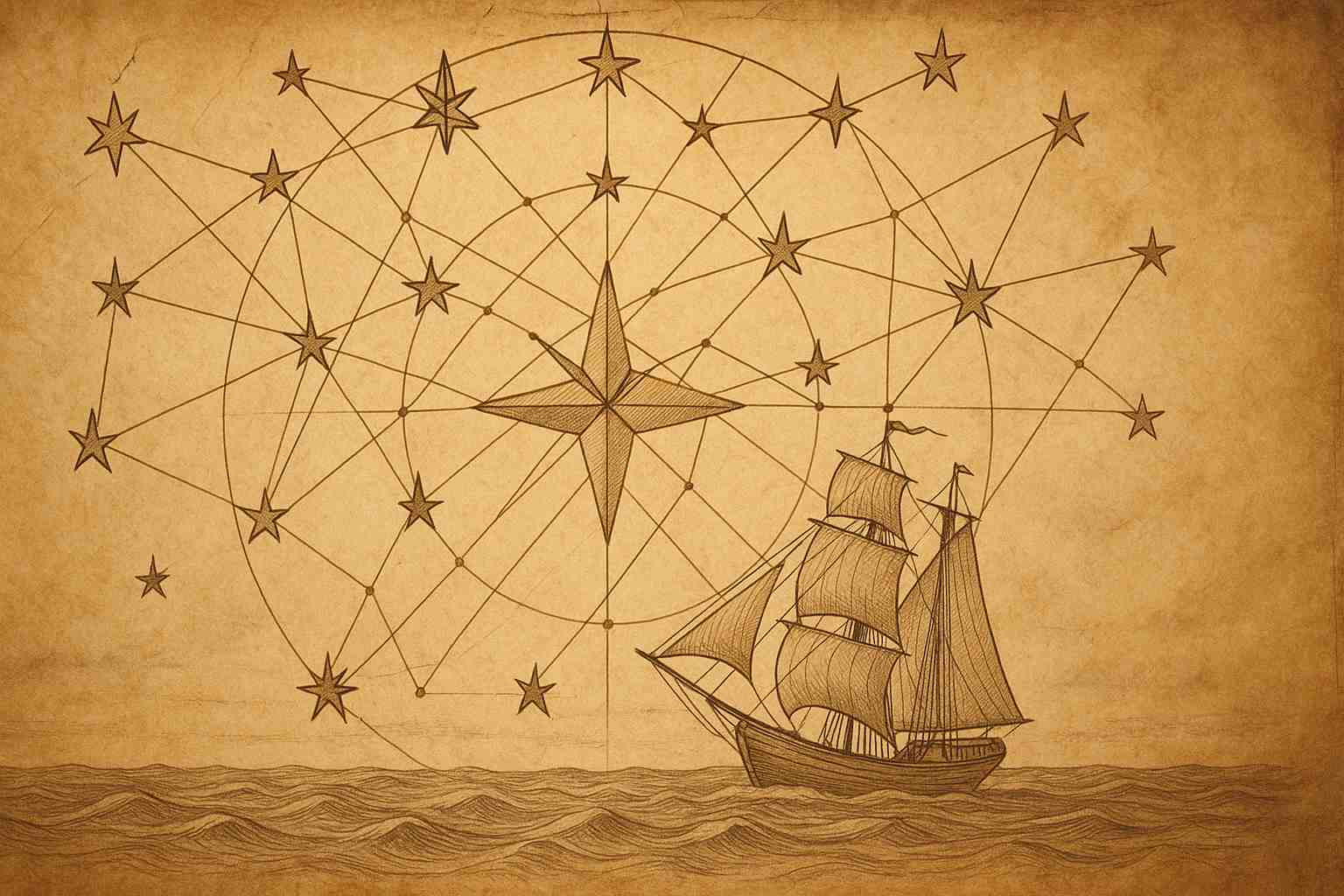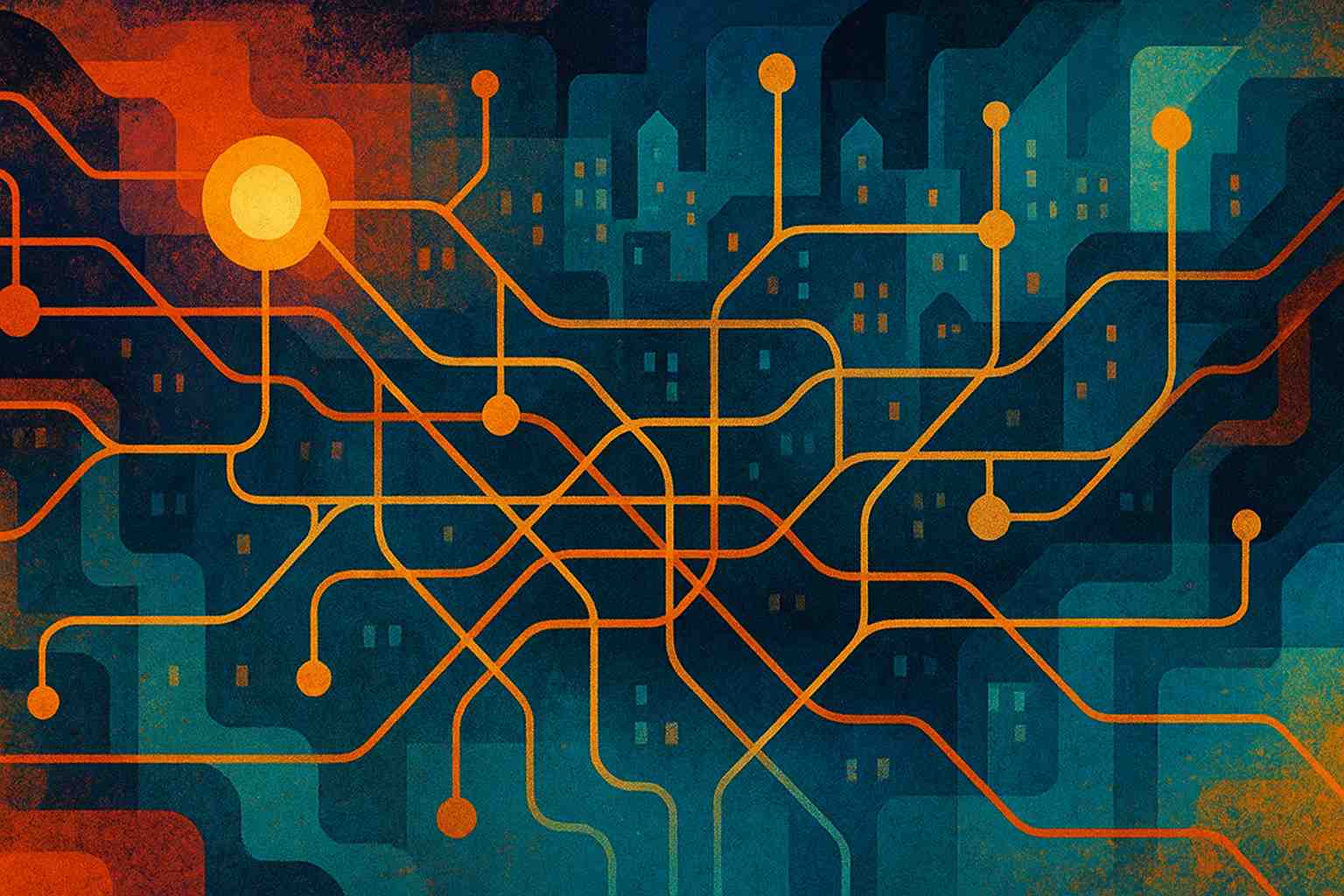The foundational species mental model helps us see the hidden forces that keep systems together. It’s like coral reefs that support entire marine ecosystems. These elements quietly shape and stabilize the world around them, in nature, business, or everyday life.
This mental model is crucial for understanding how different models of support function within various environments.
Borrowed from ecology, this thinking tool shifts how we see stability in nature, business, and life, influencing how people interact within these systems.
Unlike flashy “keystone” elements that grab attention, foundational roles focus on structural support. Think of coral reefs creating marine cities or bedrock principles guiding a company’s culture.
These elements rarely get applause—until they weaken. Suddenly, everything wobbles.
This model teaches us to spot the quiet pillars in our environments. Why do some teams thrive during chaos? What habits make personal growth stick?
We’ll explore how to strengthen these supports before cracks appear—and connect this approach to other decision-making frameworks.
Key Takeaways
- The foundational species mental model originates from ecology, emphasizing structural over behavioral influence
- Highlights systems that collapse when unseen supports fail
- Helps identify critical-but-overlooked elements in organizations
- Distinguishes between visible leaders and invisible infrastructure
- Offers methods to reinforce stability proactively
- Integrates with other mental models for stronger analysis
Introduction to the Foundational Species Mental Model

Picture a city’s subway system—hidden beneath streets but moving millions daily. This approach helps you spot similar invisible frameworks in organizations and relationships. Like biological networks, human systems rely on quiet supports that rarely get credit until they break.
Traditional analysis often focuses on visible leaders—the CEOs and flashy innovators. But what about the accounting team streamlining workflows? Or the IT protocols protecting data? These roles form the structural beams holding up entire operations.
Consider this comparison of thinking tools:
| Model | Focus | Best For |
|---|---|---|
| First Principles | Breaking down basics | Innovation challenges |
| Pareto Principle | Prioritizing outputs | Resource allocation |
| This Framework | Identifying supports | Preventing collapse |
You’ve likely seen this play out. That coworker who quietly mentors new hires? They’re maintaining team continuity. Your morning journaling habit? It builds emotional resilience brick by brick.
This theory doesn’t replace other models—it complements them. While Pareto helps trim excess, our approach strengthens what remains. It answers why some companies survive market crashes intact, while others disintegrate.
Where’s your personal or professional “subway system” needing attention?
Origins in Ecology and Ecosystem Science

In 1966, ecologists uncovered something surprising while studying tidal zones. Certain organisms didn’t just live in their environment—they built it.
This revelation changed how science understands stability, showing how unseen factors shape entire ecosystems, influencing mental models of how systems operate and interact with others.
Foundational Species Mental Model: The Role of Habitat Creators
Take beavers. Their dams don’t just create ponds—they form new wetlands that support birds, fish, and plants. Similarly, oyster reefs protect coastlines while hosting marine life. These species act like nature’s architects, constructing the stages where other life plays out.
Comparing Foundational and Keystone Species
Wolves (keystone) hunt to control prey populations. Mangroves (foundational) physically shield coastlines and nurture fish nurseries. Both matter, but their effects differ radically when removed:
| Aspect | Keystone | Foundational |
|---|---|---|
| Primary Role | Behavioral control | Physical support |
| Removal Impact | Ecosystem imbalance | Structural collapse |
| Recovery Time | Years | Decades+ |
This distinction applies beyond nature. A company’s payroll system acts like mangrove roots—invisible until it fails. What factors in your work or life quietly enable everything else?
Key Characteristics of Foundational Species

Beneath the Pacific Ocean’s surface, towering kelp forests sway like underwater skyscrapers. These living structures house over 1,000 marine species—from tiny shrimp to sea otters.
This example reveals how certain mental models create stability through physical presence rather than direct action, supporting the theory that such models are crucial for understanding complex ecosystems and their reasoning processes.
Structural Support and Ecosystem Stability
True stability comes from elements that shape environments. Kelp roots anchor entire habitats, just like reliable processes in teams anchor productivity. Three markers distinguish structural supports:
- They enable other components to thrive
- Their absence causes cascading failures
- They create predictable conditions
In business, this might be a transparent decision-making framework. In personal growth, it could be consistent sleep patterns. These quiet frameworks reduce chaos.
Enhancing Biodiversity
Strong structures naturally attract diversity. A single oak tree supports 2,300 insect relationships, while healthy company cultures draw varied talent. Stability creates safe spaces for experimentation—like coral reefs hosting fish nurseries.
Research shows systems with robust supports recover 40% faster from disruptions. When applying thinking frameworks, focus on elements that multiply opportunities for others. Does your project’s “root system” allow diverse ideas to take hold?
Look for elements that:
- Persist through changing conditions
- Enable multiple success pathways
- Require minimal upkeep once established
These traits reveal true structural value—the kind that turns temporary wins into lasting growth.
Impact of Decline in Foundational Species

Northern California’s coastal waters once teemed with life—until 2013, when 90% of its kelp forests vanished. This collapse shows what happens when critical supports erode. Starfish die-offs let sea urchin populations explode, transforming vibrant ecosystems into barren “urchin barrens.”
When the Floor Falls Out
The effects cascaded faster than scientists predicted. Abalone fisheries collapsed by 80% within five years. Over 700 marine species lost habitats. Coastal erosion accelerated as wave-buffering kelp disappeared.
This disaster mirrors risks in human systems. Like kelp, certain elements provide unseen stability:
| Warning Signs | Business Equivalent |
|---|---|
| Overgrazed kelp | Burned-out teams |
| Dying starfish | Missing feedback loops |
| Coastal erosion | Declining customer trust |
Research reveals three patterns in such collapses:
- Problems compound exponentially after thresholds
- Recovery takes 4x longer than prevention
- Secondary effects outweigh initial damage
Second-order thinking asks: What current “urchins” threaten your systems? Are you reinforcing key supports before change becomes irreversible?
Parallels Between Nature and Business Operations

Mushroom networks silently nourish forests—exchanging nutrients between trees without recognition. Like these fungal pathways, certain business roles form invisible support systems. When functioning well, they let others shine. When neglected, entire operations suffer.
Unseen Yet Crucial Roles in Organizations
IT teams keep data flowing like roots transport water. Facilities crews maintain workspaces as coral reefs shelter marine life. These individuals rarely get attention until systems crash or toilets overflow. Yet they’re part of what makes growth possible.
Consider how reciprocity shapes workplace dynamics:
| Natural Support | Business Equivalent | Impact of Neglect |
|---|---|---|
| Fungal networks | Tech infrastructure | Communication breakdowns |
| Bee pollination | HR onboarding | Slow team scaling |
| Soil nutrients | Payroll systems | Employee turnover |
Consequences of Neglecting Support Infrastructure
A single server outage can halt sales. Poor maintenance schedules lead to costly repairs. These small cracks become crises when ignored. Research shows companies investing in support roles experience 35% fewer operational disruptions.
Three signs your attention needs rebalancing:
- Visible teams get 80% of resources
- Support staff turnover exceeds 20%
- Minor issues escalate weekly
Who are the quiet heroes in your organization? What part could you play in strengthening these vital systems?
Mental Models to Interpret Complex Systems

Sailors once navigated using star patterns drawn on parchment—a simplified guide to an ever-changing sea. Our thinking tools work similarly. They help us chart paths through complexity without claiming to be the complexity itself.
The Map is Not the Territory
Every framework has blind spots. Consider how weather apps predict storms: useful, but never perfect. Three truths about thinking tools:
| Tool | Purpose | Limitations |
|---|---|---|
| Pareto Principle | Focus efforts | Misses systemic causes |
| Foundational Supports | Identify stability | Requires constant updates |
| First Principles | Break assumptions | Time-intensive process |
New information constantly reshapes our understanding. A 2023 study found teams revising their frameworks quarterly made 27% fewer errors than yearly updaters. The key? Treat models like hiking trails—paths to follow, not permanent roads.
Try this approach:
- Combine 2-3 models for cross-checking
- Set calendar reminders to reassess
- Track when predictions mismatch reality
What “maps” guide your decisions? When did you last check if they still match the world you navigate today?
Applying the Foundational Species Mental Model in Your Daily Life

Just like kelp forests or coral reefs hold marine life together, some parts of your work or routine may serve as quiet anchors. Spotting these invisible supports can prevent chaos before it starts.
For example, consider a team member who onboards new hires, a workflow checklist that reduces errors, or a shared lunch calendar that fosters social connection. None of these may stand out, but their removal could cause serious friction. By using the foundational species mental model, you learn to notice what silently holds things up.
Here’s how to apply the concept:
At work: Look for routines or roles that enable others to succeed. Reinforce or reward those areas—even if they don’t seem flashy.
At home: Identify habits that make other good habits easier (like keeping your gym bag by the door or meal prepping on Sundays).
With teams: Strengthen processes that build long-term resilience—clear communication protocols, backup systems, and wellness check-ins.
Understanding foundational supports lets you engineer stability into complex situations. Think of it as “infrastructure thinking”: you’re not just solving problems, you’re preventing them by strengthening what quietly holds the system together.
Integrating Emotion into Mental Modeling

A firefighter’s gut feeling often detects smoke before alarms blare—a primal alert system honed through experience. Emotions work similarly in decision-making, acting as biological sensors for system stability. Research reveals our feelings often flag changes in environments before logic catches up, much like animals sense earthquakes hours before tremors hit.
Emotional Signaling and Its Effects on Decision Making
Studies of wildlife conservation show emotional responses drive critical behavior shifts. When ranchers feel unease about predator numbers, it frequently precedes measurable ecosystem imbalances. This instinct mirrors how employees sense cultural erosion before metrics reflect it.
Consider how emotional and logical signals compare:
| Signal Type | Detection Speed | Accuracy Rate | Best For |
|---|---|---|---|
| Emotional | Immediate | 72%* | Spotting hidden risks |
| Logical | Delayed | 89%* | Confirming patterns |
*2023 University of Michigan study on decision-making
Recognizing Invisible Support Systems in Real Time
Many foundational supports only become visible when they fail. This is like IT networks during outages or quiet team members during vacations. But with practice, you can start to see these roles and routines before problems arise.
Start by paying attention when things seem too smooth. That’s a clue. What is quietly working behind the scenes to prevent noise, drama, or confusion? Is it a routine check-in, an automated report, or a team member who fixes problems without fuss?
Make a habit of noticing:
Who always anticipates roadblocks?
What tool, person, or process keeps other things running?
Where does stability in your day come from—and how is it being maintained?
By seeing these supports in real time, you can prevent the “kelp collapse” before it begins. And help strengthen the things that keep your world from wobbling.
Dynamic Analysis with Fuzzy Cognitive Mapping

Think of a city’s power grid—hidden wires connecting homes, hospitals, and streetlights. Fuzzy cognitive mapping works similarly, revealing how systems truly operate beneath surface appearances. These visual tools help predict ripple effects when critical elements shift.
Understanding Connectivity in Cognitive Maps
Imagine drawing connections between coffee intake, focus levels, and meeting outcomes. Cognitive maps use nodes (ideas) and arrows (influences) to show these relationships. Unlike simple flowcharts, they assign weights to connections—like rating how strongly sleep affects productivity.
Research shows traditional analysis misses 62% of indirect links in complex systems. Fuzzy mapping catches these hidden pathways. A 2022 MIT study found teams using these tools identified 3x more risk factors in supply chains.
| Traditional Analysis | Fuzzy Mapping | Key Difference |
|---|---|---|
| Linear cause-effect | Web of influences | Sees indirect impacts |
| Static snapshots | Dynamic simulations | Predicts chain reactions |
| Yes/No conclusions | Probability ranges | Handles uncertainty |
Start with sticky notes and string. Write key elements on notes, then draw arrows showing influences. Mark each arrow +, -, or ? for unknown effects. This low-tech approach builds understanding before using software.
Teams at Google use simplified versions to map project dependencies. Their 2023 experiment reduced missed deadlines by 41% by visualizing task connections. What mechanisms in your work could benefit from this clarity?
Three steps to begin:
- List 5-7 core elements in your system
- Draw influence arrows with +/− signs
- Test scenarios by “tugging” one node
This knowledge transforms guesswork into informed strategy. Like tracing wiring before renovating a house, mapping connections prevents unexpected blackouts. When did you last audit your decision-making “circuit board”?
Case Studies from Ecology and Conservation

Beavers in Southwest England transformed barren streams into thriving wetlands—and reshaped how we manage complex systems. Their return after 400 years shows how restoring natural architects can repair damaged environments. But success required navigating human concerns as carefully as water flows.
Insights from Beaver Reintroduction Projects
Eighteen beaver families in Devon created 28 acres of new habitat in three years. Fish populations jumped 37%, while flood risks dropped for downstream farms. But dams also flooded roads and orchards, testing community patience.
Key lessons emerged from this living experiment:
| Stakeholder | Initial Concern | Outcome |
|---|---|---|
| Farmers | Land flooding | Improved soil moisture |
| Anglers | Blocked fish paths | New spawning grounds |
| Residents | Tree damage | Increased bird diversity |
Research reveals three critical success factors:
- Early involvement of all interest groups
- Adaptive management strategies
- Clear exit plans if conflicts escalate
One landowner shifted from opponent to advocate after seeing drought protection. “They’re better engineers than our drainage pipes,” he admitted. This evidence shows trust builds through visible results.
Restoration projects mirror workplace changes. Both require balancing immediate disruptions with long-term gains. How might you apply these lessons to your own complex systems?
Detailed Look at System Connectivity

Spiderwebs reveal hidden patterns—silken threads connecting raindrops, leaves, and prey. Like these intricate networks, systems thrive or fail based on how their parts link together. Understanding these connections helps predict which elements truly matter.
Assessing Concept Centrality
Think of a city’s power grid. Stations with more connections blackout entire regions if they fail. This “degree centrality” measures an element’s influence in your systems. Tools like systems thinking frameworks help map these relationships visually.
| System Type | Ideal Density | Risk If Ignored |
|---|---|---|
| Startups | Sparse | Missed opportunities |
| Factories | Dense | Cascade failures |
| Teams | Balanced | Communication gaps |
Predicting Dynamic Behavior
Forest fires spread faster through tightly packed trees. Similarly, stress tests show how problems ripple through your structures. Try this:
- Simulate removing one process
- Track downstream impacts for a week
- Note which adjustments stabilize outcomes
Research shows systems with 30-50% connectivity adapt best. Too sparse? Ideas stagnate. Too dense? Small errors become crises. Regular analysis spots weak points before they snap.
Three questions for your next review:
- Which connections surprise you?
- What single change would strengthen most links?
- Where are you assuming stability without proof?
Benefits of Investing in Foundational Roles

Scaffolding on a construction site rarely gets praised—until workers can’t reach higher floors. Similarly, MIT Sloan research reveals organizations prioritizing support roles face 23% fewer major disruptions. These behind-the-scenes elements act like shock absorbers, smoothing bumps in both work and life.
Consider a 2022 study tracking companies that boosted infrastructure spending. Teams with strong support systems recovered faster from supply chain issues and tech failures. The lesson? Types of structural supports matter as much as visible strategies.
Reduced Disruptions and Increased Resilience
Three steps to strengthen your systems:
- Audit processes people rely on daily
- Measure how failures ripple through teams
- Reward those maintaining invisible frameworks
Businesses investing in these areas report fewer last-minute crises. In personal life, consistent routines—like meal planning or savings habits—prevent common problems. You become the author of your stability.
Where could shoring up hidden supports create breathing room today?
Conclusion
The foundational species mental model helps us see what usually gets overlooked—the quiet structures that hold everything together. From kelp forests supporting marine life to payroll systems enabling business flow, foundational supports exist all around us.
They don’t just stabilize ecosystems or organizations—they determine whether things thrive or fall apart.
By learning to spot and strengthen these unseen supports, we build systems that endure change, resist collapse, and support growth. Whether you’re leading a team, improving personal habits, or designing workflows, this model offers a practical lens for lasting impact.
Want a stronger foundation in your world? Start by asking: What am I standing on that’s holding everything else up? Then, reinforce it before the cracks appear.


